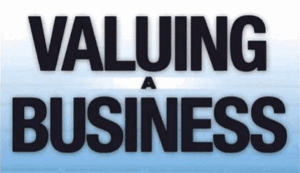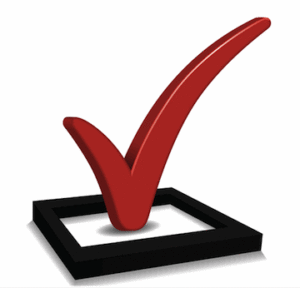 During my years as VP of Marketing and Sales at a hearing aid manufacturer, I had many people ask me how to evaluate the worth of a hearing aid practice – either to sell or purchase. To me, there was no simple formula because many issues were involved, and some needed to be analyzed in ways directly related to the hearing aid business rather than to business in general.
During my years as VP of Marketing and Sales at a hearing aid manufacturer, I had many people ask me how to evaluate the worth of a hearing aid practice – either to sell or purchase. To me, there was no simple formula because many issues were involved, and some needed to be analyzed in ways directly related to the hearing aid business rather than to business in general.
I scoured literature and recommendations from the business community, but their approaches mostly represented a generic textbook approach reminiscent of someone who had never purchased or sold a business, much less a hearing aid practice. Most seemed to parrot what someone previously had written, mostly for large companies, and none captured the ins and outs of the hearing aid industry that could have a significant impact on the eventual value.
As a result, I decided to put together some questions/comments that I thought would be helpful to a potential buyer/seller and their “team” when attempting to place a value on an existing hearing aid dispensing practice. Keep in mind that there may be no magical formula for hearing aid dispensing practice valuations, and that most “formulae” applied to other businesses often skirt issues that are important or possibly “hidden” in hearing aid dispensing.
I always assume (rightly or wrongly) that those one is talking with have their own ideas as to what they think a practice is worth, and I assume that they have some history on which to make this decision. Still, something of value could be completely overlooked, and this is the purpose of these comments.
Individuals who specialize in valuations use various methods, but no set formula exists that is universal to all businesses. Most will use some type of asset valuation or capitalized earnings approach. Individuals who do these valuations range all the way from investment bankers (highest fees and for large businesses); to accountants, management consultants, and those who specialize in valuations (medium fees); to business school professors and other independents (lowest fees).
However, to complete any valuation, it is important to consider aspects of a hearing aid business that may not be readily apparent, even though they are intuitively known, or to consider different ways of evaluating what is overtly recognized.
Where to Start?
What I have done is to outline some thoughts one might consider in valuing a practice. This information is by no means a step-by-step guide, but offers a list of issues to consider and questions to ask. These can be added to the evaluation procedure being used. I expect that readers will question some of the posted thoughts and disagreements will arise with these suggestions, but that is OK. All of this blog (and the next) is intended to do is get the buyer/seller thinking about issues that may affect the financial value of the practice.
1. Organize your team
In order of importance, it should begin with an accountant who is familiar with analyzing financial performance of small businesses. It may or may not be an accountant you already use. The accountant may recommend that you also include a banker, if needed, and lastly, perhaps legal consultation.
2. Financial Performance
The basic data required to evaluate the business lies in the accounting system.
The accountant can be expected to analyze the financial statements following any of a number of ratios. The data analyzed will come from basic accounting documents such as ledgers, journals, profit-and loss statements, and financial statements. Information from these will allow the accountant to assess the financial health of the business. Start an accountant on this. He/she should receive all accounting, financial, and tax records of the practice.
The accountant should keep the following in mind:
- Most privately or closely held practices seek to suppress profits, thereby suppressing taxes. Therefore, the financial statements may not reflect their true earning power.
- Business owners often reward themselves with salaries and other benefits substantially greater than would be paid to non-owner managers for performing the same functions.
- Therefore, to arrive at an economic view of the business, have the accountant recast the financial statements to reflect, among other things, the removal of all direct and indirect owner-related expenses. This should pare the financial data down to a reflection of the real numbers.
- What has been the practice of withholding cash receipts from the reported earnings records of the business? Will this affect the financial records?
- Keep in mind that a change in ownership will most certainly affect the financial performance of the business–for better or worse.
- The financial records analysis from the accountant should include answers to two basic questions:
a. Is the business financially healthy, as it exists currently?
b. Will a management change allow for debt-service payments and provide an acceptable salary/return from the existing business level?
3. Value
- Extrapolation of earning trends generally is not the best way to make a prediction. Too often, the future is not like the past. Unanticipated changes occur every year.
- Experience suggests that some existing hearing aid practices may be of only nominal value. An operation grossing between $200,000 and $225,000 per year probably has neither sufficient assets nor potential to justify any investment (valuation) over that which might be determined by an evaluation of the direct or physical assets.
- If a person were to purchase the business, a realistic evaluation of an ongoing dispensing practice must result in a determination that not only will the buyer be able to enjoy a livable wage, but should also be able to receive an adequate return on the investment. It is important, therefore, to “run the numbers” or project that return.
- Value should be financial in definition. It is represented by the book value/net assets of the practice.
- Value is also defined by sales and growth trends as shown by historical profit and loss statements.
- Value also lies in the future stability of the practice, both financially and competitively.
- Value exists where there is an opportunity not only for financial security but also for growth.
- Accounts receivable, while an asset, if highly-aged, cost money and may not be easily collectable.
- Accounts payable, especially if high or past 90 days, raise questions about the stability and health of the practice.
- In an established practice, as much as 60% of sales may be to existing customers, but this assumes that the practice has continued to generate new customers to replace the 25% or so lost per year.
- Hearing aid replacement cycles should be on the order of approximately three years.
- How solid is the current customer base?
- One of the best features to focus on in hearing aid sales is not overall sales figures, but units sold. Check the trend for these over the past five years and also project what you think these might be in the future, taking into account the past, current, and projected business climate for hearing aid sales.
- Check the hearing aid unit sales in the U.S. in the past years. How does the practice compare?
- Are past selling prices in line with current and projected figures?
- What is the hearing aid industry’s anticipated projections for the next 6 months, year, 5 years?
(Next week’s blog will focus on evaluation of other elements of the business, employees, sources of sales, the user list, and equipment and inventory).






